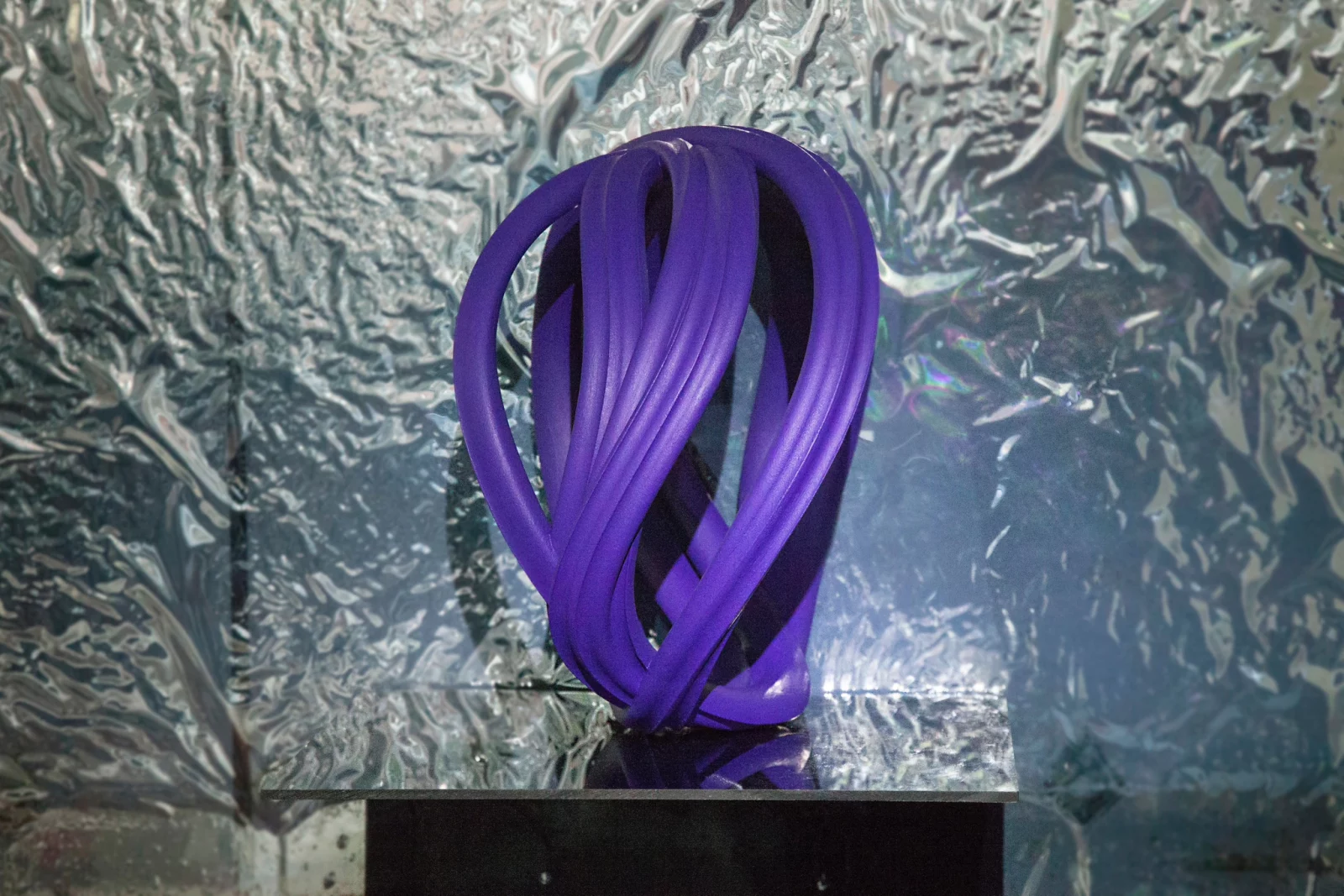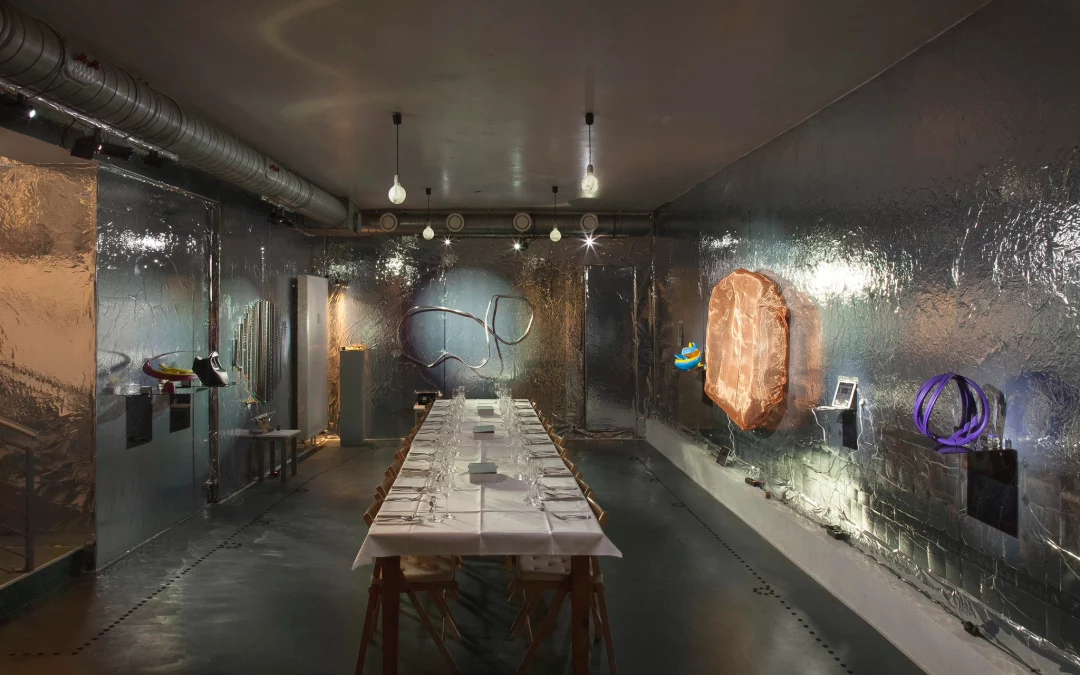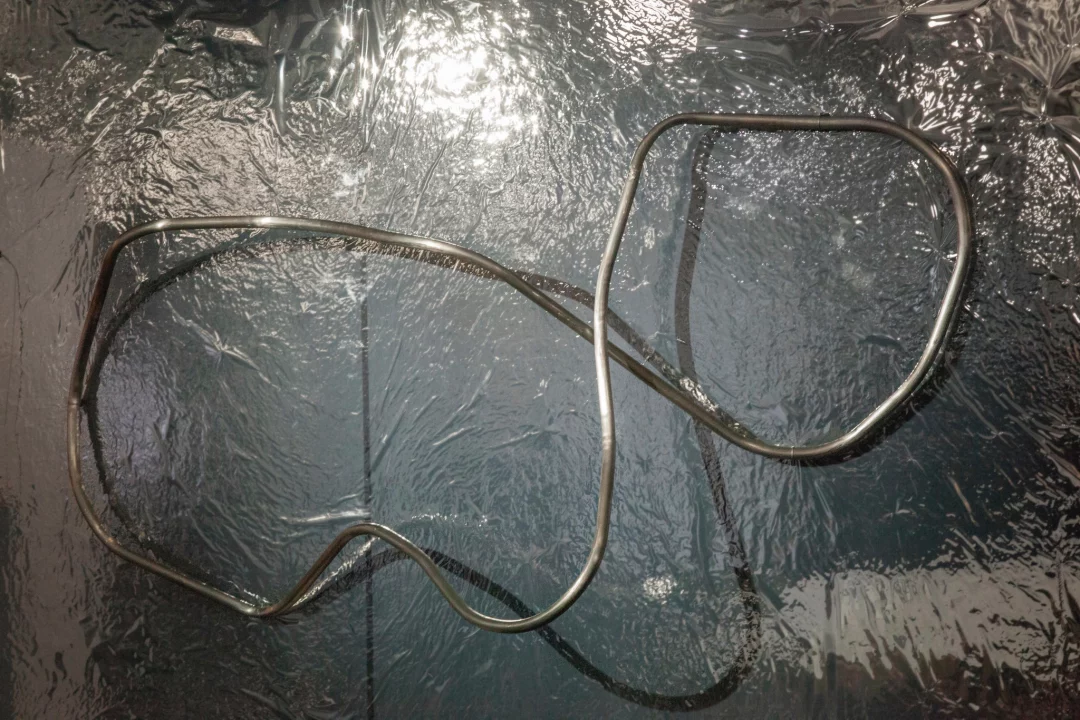In autumn 2022, Semra Sevin created the exhibition (IN)VISIBLE DIFFERENCES at the gallerist-curator-chef Ulrich Krauss’ space Zagreus Projekt. The multimedia art installation is based on interviews that Semra held with blind and visually impaired people from four continents. The interviewees were asked to submit self-portraits whose dpi codes and size Semra used to create sculptures with a 3D printer. She also made metallic sculptures, pairing each of either kind with the audio from an interview or a sound created by their touch, as well as the interviewee’s favourite scent. As an audience, you’re encouraged to touch the sculptures, follow their shape with your hands, and also to sit down for dinners carefully curated by Ulrich.
Our very own social media manager, Kelly Huen, spoke to the duo about (IN)VISIBLE DIFFERENCES as an installation and an experience.
culturala / Kelly Huen
Hi Semra and Ulrich, thank you so much for chatting with us! So Semra, your work, especially your photography, has always dealt with the issues of identity and societal pluralism. Could you tell me how this project came about?
Semra
I was curious about how blind and visually impaired people perceive their environment and if they might have a superpower in perceiving the “inner” traits of a person, independent of beauty standards and visible stereotypes. It turned out that it wasn’t that simple. Indeed, visually impaired people saw beauty and weight as a marginal subject, especially if they were completely blind from very early on. Instead, all my interviewees mentioned a pleasant voice, empathy and an emancipated contact to humans to be important. However, the interviews showed that bias is not only transmitted by visible stereotypes – the subject of prejudice and exclusion is taking place in a complex way on several layers in society. We are often not even aware of our biases, although actions and practice show otherwise.

culturala
Yes, makes sense… We often don’t notice the complexities that construct the world surrounding us. I think it’s very admirable that you explore that subject through a medium that is mostly visual, too!
And Ulrich, your gallery Zagreus Projekt, which is where the exhibition is held at, also functions as a gastronomic institution. You’re not only a curator but also a chef, where you design a four-course menu together with the occurring exhibitions. How does the concept of food elevate the theme of your exhibitions?
Ulrich
In general, my guests spend about 4 hours at an exhibition when dining at the Zagreus gallery. They eat and drink, they talk and exchange ideas; they have fun, and they experience pleasure. Each exhibition at Zagreus consciously interconnects with these circumstances. As a result, the guests end up talking about topics they may otherwise not even think about. That’s what I’ve discovered over the 20 years of my professional practice with the Zagreus project.

culturala
It’s quite fascinating that you were able to transform/transcend something as mundane as eating into an experience that stimulates productive conversations. I would like to know what the challenges of developing the menu for (IN)VISIBLE DIFFERENCES were as one of the senses, seeing, ends up excluded from the dialogue?
Ulrich
The challenge is to stimulate the guests through the sense of taste instead of the eyes. The first course of the dinner plays with two contrasting soups, one black and one white. Both soups are very different in taste and texture; one is creamy, smooth and hearty and the other one is more acidic, thin and sharp in taste. This opens the conversation about the fact that visually impaired persons can often still see something and simply need a starker contrast in order to recognise shapes.
The second course is stripped of its entire visual appeal which directs the focus onto the sense of taste. Everything has a boring beige colour and the texture of mashed potatoes. However, there are five very different flavours arranged clockwise on the plate, a system blind people use to organise their plates.
I was grateful to be able to talk to a visually impaired person who explained the sensitivities to me. I wanted to know what is important for visually impaired people when they eat in public? How should the food be arranged and what do they need to know? I was told that the plate must be clearly divided and the dishes or tastes separated from each other. The sauce should be in the middle and you should have to cut as little as possible. The second course is a plate adjusted to the experience of visually impaired people.
For the third course, I played with the food experience of sighted people. I employ all the no-goes for the visually impaired. Cutting meat, extracting fish bones or eating from collective plates can be a big challenge for them. However, I’m not making it easy for my sighted guests either. Everyone has to cut their own slices of fish and meat, so they become aware of how much they need their ability to see within this context.
The fourth course and dessert is a mix of striking colours to start a conversation around the fact that there are different damages to the retina and sometimes visually impaired persons might see red text on yellow or blue on black better. It’s a challenge to make the guests aware of their relationship to their sightedness through a culinary experience. For us it’s a given as we’re used to having everything beautifully presented to us when we’re eating. Sighted people perceive the environment strongly with their eyes. In (IN)VISIBLE DIFFERENCE, sighted guests are invited to become more knowledgeable and understanding of the world visually impaired persons live in.

culturala
Art has never tasted more delicious! It’s interesting to see how you finesse the dining experience into an artistic one. Back to you Semra: as an able-bodied artist, how do you negotiate the representation of your interviewed subjects in a way that is fair on both sides?
Semra
To answer you correctly, I would have to pass this question to my interviewees as I can only report from my point of view. My interviewees said that my voice is nice and that I sound empathetic and genuine, which motivated them to do the interview with me. Transparency of my motivation and aims, as well as the inclusion of the interviewees’ feedback at every step helped me to gain the respect and trust in working with my interviewees. They saw me and my work as a connector and lighthouse between the visually impaired and visually abled world. I know this is my first show of this kind, and I actively look for feedback from the community I interviewed. Like all things connected to identity and culture, feedback also differs from country to country, and I’m happy to continue this work aided by the feedback I get.

We use cookies to make sure you get the best out of our presence, and by using our website, you agree to our use of cookies. For more information, read our Policies or reach out to us by email.